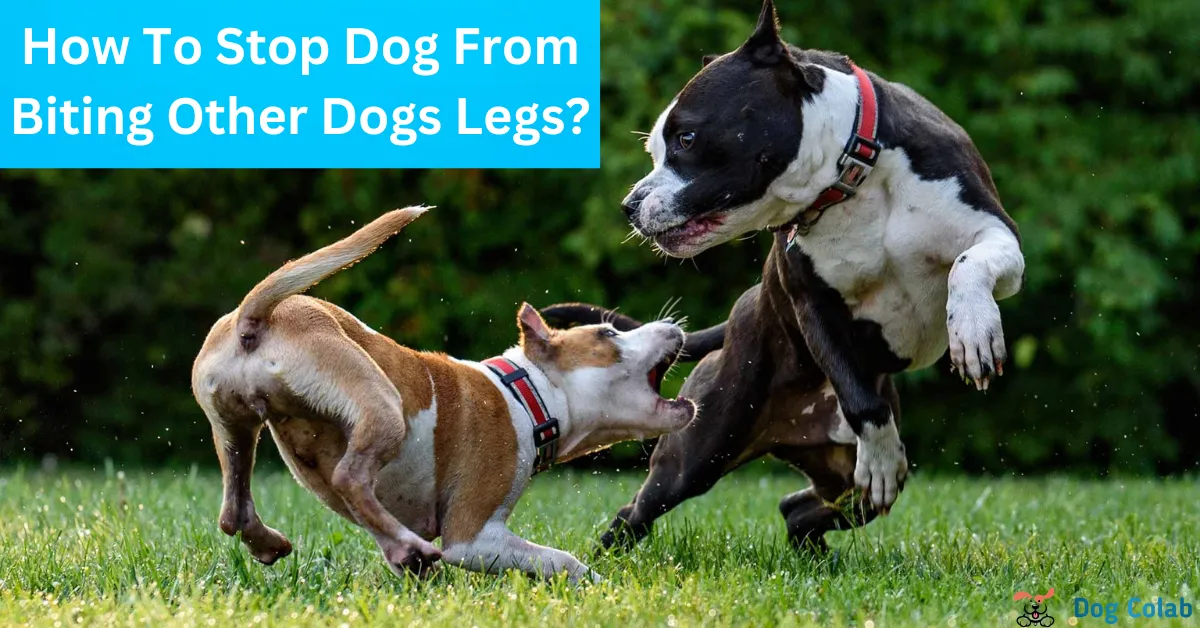Addressing aggressive or biting behavior in dogs is essential to ensure the safety and well-being of both the dog and others around them. When a dog exhibits the tendency to bite other dogs’ legs, it can be concerning and potentially dangerous. Whether it stems from fear, territoriality, or a lack of proper socialization, understanding the root cause is crucial in developing effective strategies to curb this behavior. So, In this blog post, we will discuss the reasons why do dogs bite other dogs legs and provide practical methods on how to stop dog from biting other dogs legs. By implementing these techniques, dog owners can foster a safer environment for their furry friends.
Why Do Dogs Bite Other Dogs Legs? (8 Reasons)
Dogs may bite other dogs’ legs for a variety of reasons, and it’s essential to understand that dog behavior can be complex and context-dependent. Here are some common reasons why do dogs bite each other’s legs.

1. Playfulness
Dogs often use play biting as a form of social interaction with other dogs. It is a way for them to engage in friendly wrestling and playful activities. This type of biting is usually gentle and not meant to cause harm.
2. Communication
Dogs communicate through body language, and biting can be a way of conveying messages to other dogs. A nip on the leg could be a signal to initiate or end an interaction, set boundaries, or express discomfort. This behavior is more common in multi-dog households where the dogs are trying to establish their place in the pack.
3. Fear or Defensiveness
A dog may bite another dog’s legs if they feel threatened, fearful, or cornered. This is a defensive reaction to protect themselves from perceived harm or aggression.
4. Establishing Dominance
In some cases, a dog may bite another dog’s legs as a way to assert dominance or establish their position in the pack hierarchy. This behavior is more common in unneutered males and can lead to more aggressive encounters if not managed properly.
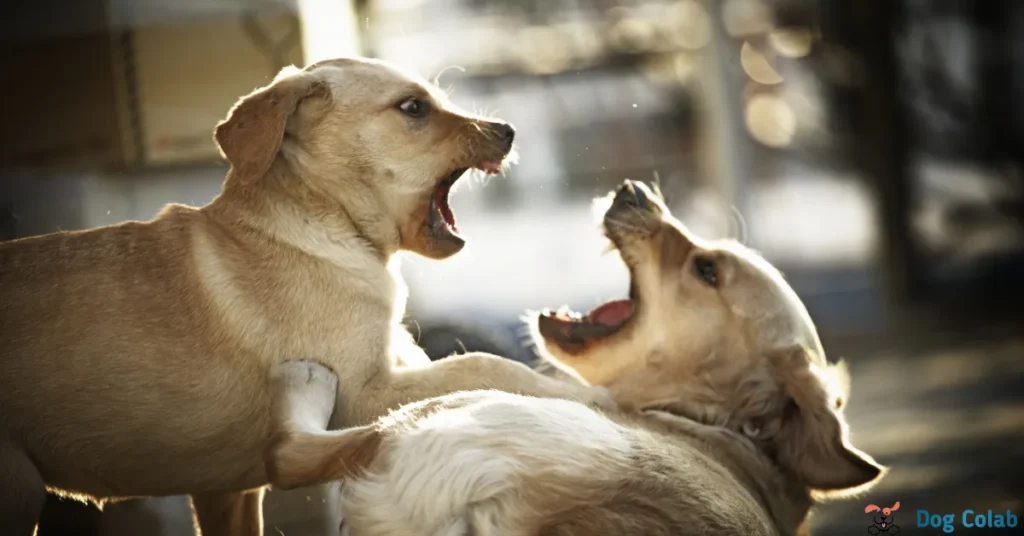
5. Resource Guarding
If one dog is in possession of a valued resource such as food, toys, or attention, it may bite another dog that approaches too closely, especially if they feel its possession is being challenged.
6. Pain or Discomfort
A dog may resort to biting if they are in pain or feeling unwell. This biting behavior may not be directed specifically at the legs but can be a response to any kind of touch or proximity that exacerbates their discomfort.
7. Maternal Instincts
Mother dogs may bite the legs of their puppies as a way of disciplining them or guiding their behavior. This behavior helps teach puppies boundaries and appropriate social interactions.
8. Playful Herding Behavior
Some breeds have a natural herding instinct, and they may use gentle nips or bites on the legs of other dogs to move them or control their movements.
Why Do Dogs Bite Other Dogs Legs When Playing?
When dogs play, they often engage in a variety of behaviors that mimic hunting and predatory instincts. Biting each other’s legs during play is one of these behaviors, and it can serve several purposes.
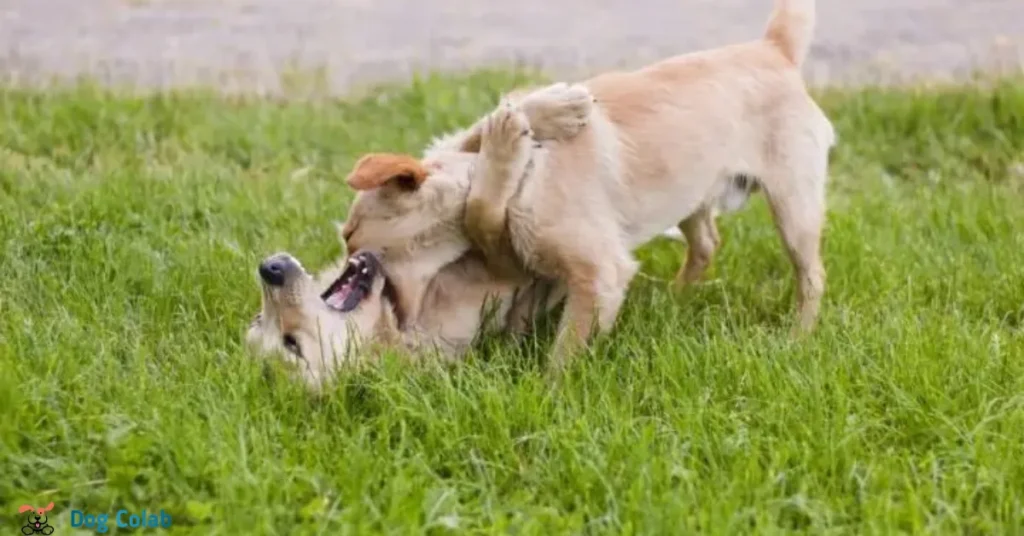
1. Instinctive Behavior
Dogs are natural predators and their ancestors relied on leg bites to immobilize their prey during hunting. While domesticated dogs no longer need to hunt for survival, these instincts can still be seen during play.
2. Communication
Dogs use body language and vocalizations to communicate with each other, and play biting can be a way for them to convey their intentions during play. It’s a form of social interaction and often signals that the play is friendly and non-threatening.
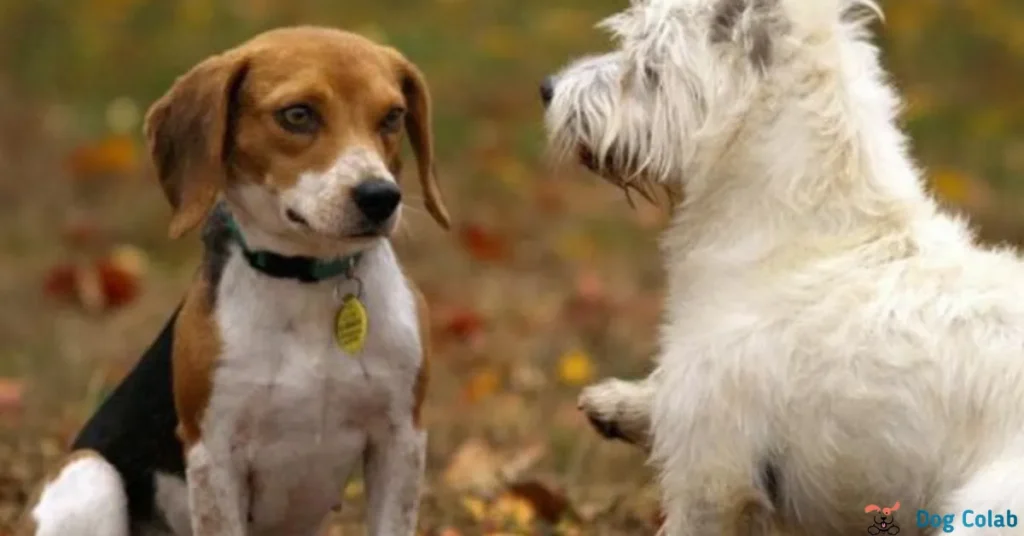
3. Establishing Boundaries
Play biting can also serve as a way for dogs to set boundaries and communicate what they are comfortable with during play. If one dog feels uncomfortable or wants to take a break, it may gently bite the other dog’s legs as a way to signal its need for space.
4. Play Arousal
Play is an essential aspect of a dog’s development, and it helps them build social skills and coordination. Biting during play can increase their excitement and engagement in the activity.
What Are the Signs That a Dog Is Aggressively Biting And Friendly Towards Other Dogs?
Signs of Aggression in Dogs
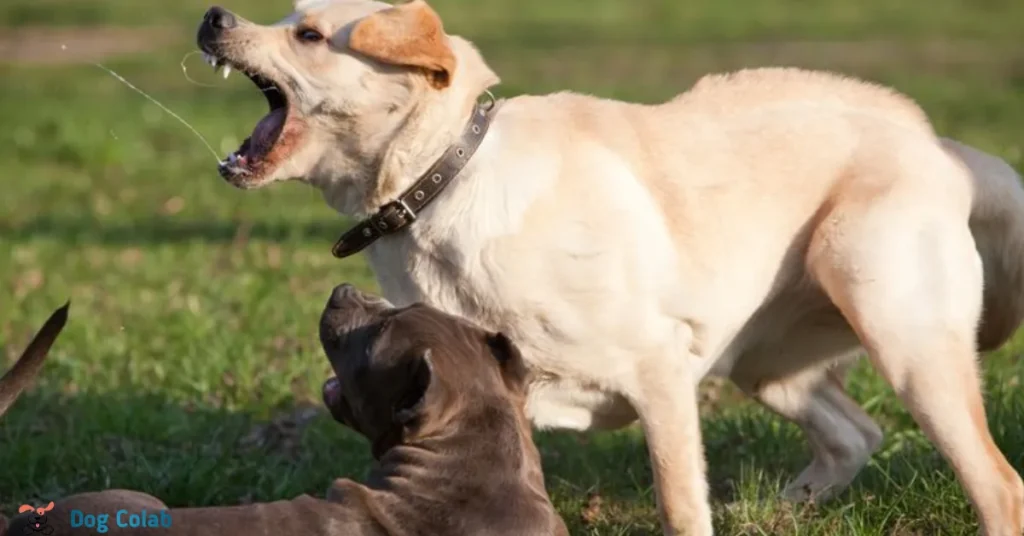
- Raised Hackles: Aggressive dogs may raise the fur along their back and neck, making themselves appear larger and more intimidating.
- Stiff Body Posture: Aggressive dogs often have a tense and rigid body posture, with their muscles visibly tense.
- Growling and Snarling: Aggressive dogs emit deep, low growls or snarls, indicating their discomfort or willingness to attack.
- Showing Teeth: Baring teeth is a clear sign of aggression and a warning that the dog may bite.
- Direct Staring: Aggressive dogs may lock their gaze on their target, maintaining intense eye contact.
- Lunging: An aggressive dog may lunge towards another dog or person as a threat display.
- Raised Tail: While it’s commonly believed that a raised tail means a happy dog, a stiffly raised tail can be a sign of aggression.
- Mouthing: Aggressive dogs may use their mouths to exert dominance or aggression by nipping or biting.
- Standing Over: An aggressive dog may stand over another dog or person to assert dominance.
Signs of Playfulness in Dogs
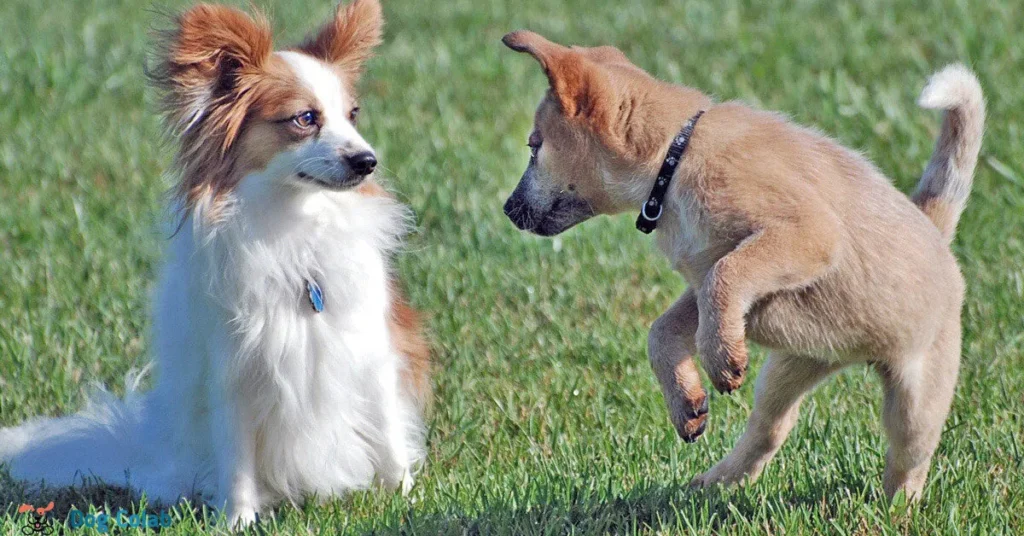
- Play Bow: A play bow is when a dog lowers their front end while keeping their rear end up, signaling an invitation to play.
- Bouncy Movements: Playful dogs often display bouncy, exaggerated movements when they approach or run around.
- Wagging Tail: A loose and wagging tail is a common sign of a happy and playful dog.
- Relaxed Body: Playful dogs have a loose, relaxed body posture without any visible tension.
- Playful Barking: Playful barks are usually higher-pitched and often accompanied by playful lunging or jumping.
- Pawing: Dogs may playfully paw at each other or at their owners during playtime.
- Chasing: Dogs engaging in play may take turns chasing each other without any signs of aggression.
- Playful Nipping: During play, dogs may gently nip at each other without causing harm or displaying aggression.
- Rolling Over: A dog playfully rolling over on its back is a submissive gesture and a sign of playful engagement.
Recommended Also Read:- How to stop dog barking.
If Your Dog Biting Other Dogs Legs, What Are the Possible Problems?
If your dog keeps biting other dogs legs, it can lead to several potential problems and consequences:
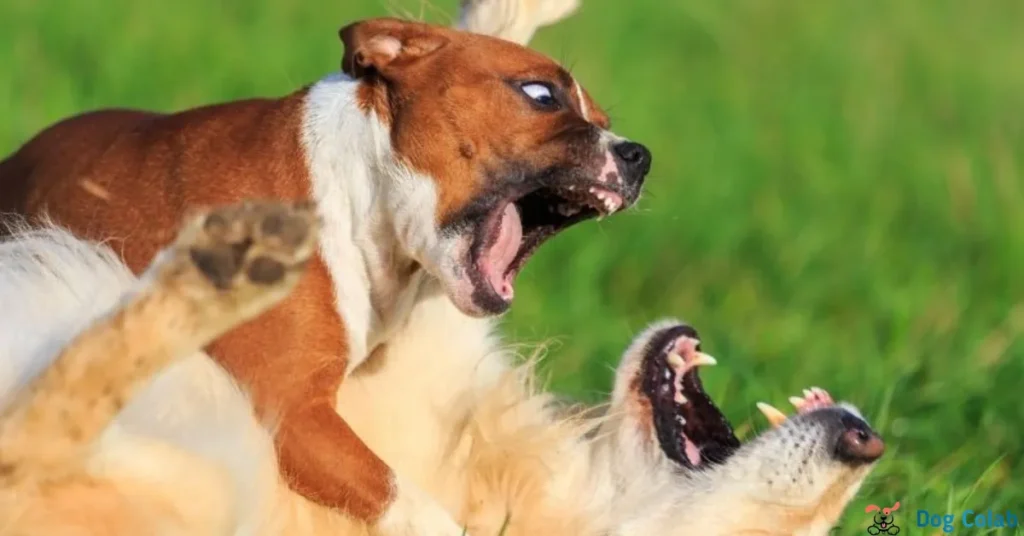
1. Aggression and Fights
Biting other dogs can escalate into full-blown aggression and fights, putting both dogs at risk of injury. It may also lead to legal issues if other dogs or their owners are harmed.
2. Injury and Vet Bills
Dog bites can cause wounds, punctures, and infections, resulting in expensive veterinary bills for both the injured dog and your own dog if they get hurt in retaliation.
3. Legal Consequences
If your dog bites another dog and causes harm, you could be held liable for the damages. This might involve paying for the other dog’s medical expenses or facing legal action from the other dog’s owner.
4. Social Isolation
If your dog has a reputation for being aggressive and biting other dogs, other dog owners may avoid interacting with you and your dog during walks or at the dog park. This can lead to social isolation for both you and your pet.
5. Behavioral Issues
Frequent dog biting of other dogs can indicate underlying behavioral problems in your own dog, such as fear, anxiety, or a lack of socialization. Ignoring or not addressing these issues can result in the behavior becoming more ingrained and harder to modify over time.
Is It Okay For Dogs To Bite Other Dogs’ Legs When Playing and Should You Allow It?
Allowing dogs to bite each other’s legs during play can be a somewhat controversial topic and ultimately depends on the context and individual dogs involved. Here are some important considerations.
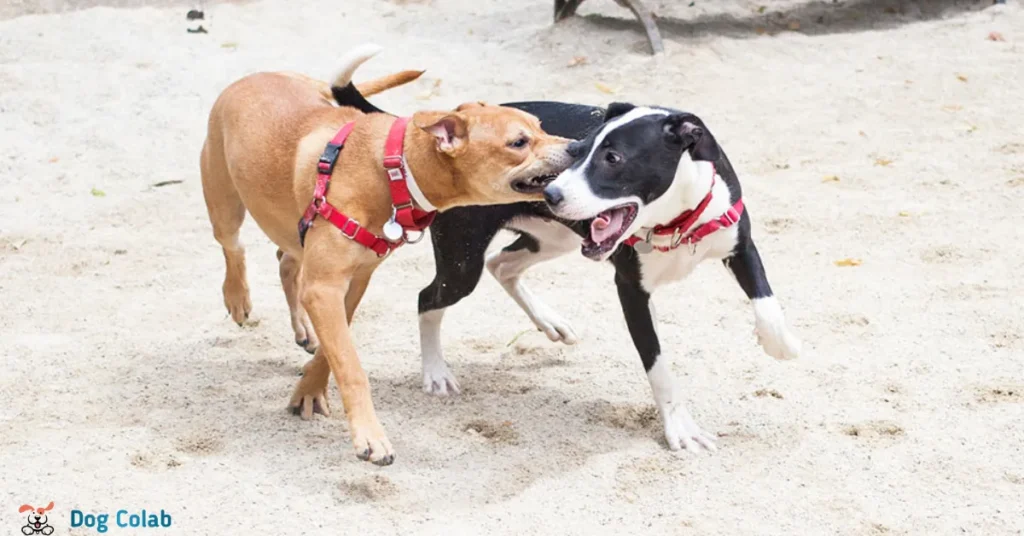
1. Play Style and Consent
Dogs have different play styles, and some may engage in gentle mouthing or biting during play without causing harm or distress to each other. However, it’s crucial to ensure that both dogs are comfortable with this type of play and that it remains friendly and non-aggressive. Signs of discomfort or fear from either dog should be taken seriously.
2. Supervision
When dogs play, it’s essential for owners to supervise them closely. A responsible owner can intervene if play becomes too rough or one dog seems uncomfortable with the interaction. Unsupervised play can lead to misunderstandings or escalate into aggression.
3. Individual Personalities
Some dogs may not enjoy rough play or might be more sensitive than others. Owners should be aware of their dog’s temperament and cater playtime to their preferences.
4. Training
Dogs should be trained to have good bite inhibition, meaning they know how to control the force of their bite. This is important because even during play, a dog may accidentally hurt their playmate if they don’t have proper bite inhibition.
5. Context
It’s essential to differentiate between play and aggressive behavior. If the play escalates into aggression, such as growling, snapping, or prolonged intense biting, it’s not appropriate and should be stopped immediately.
6. Alternatives
There are plenty of other ways for dogs to interact and play together without resorting to biting. Fetch, tug-of-war with appropriate toys, and chase games can be great alternatives.
Recommended Also Read:- Put collars on dogs that bite.
How To Stop Dog From Biting Other Dogs Legs?
Stopping a dog from biting other dogs’ legs requires a combination of training, socialization, and management. Here are some simple steps on how to stop dog from biting other dogs legs.
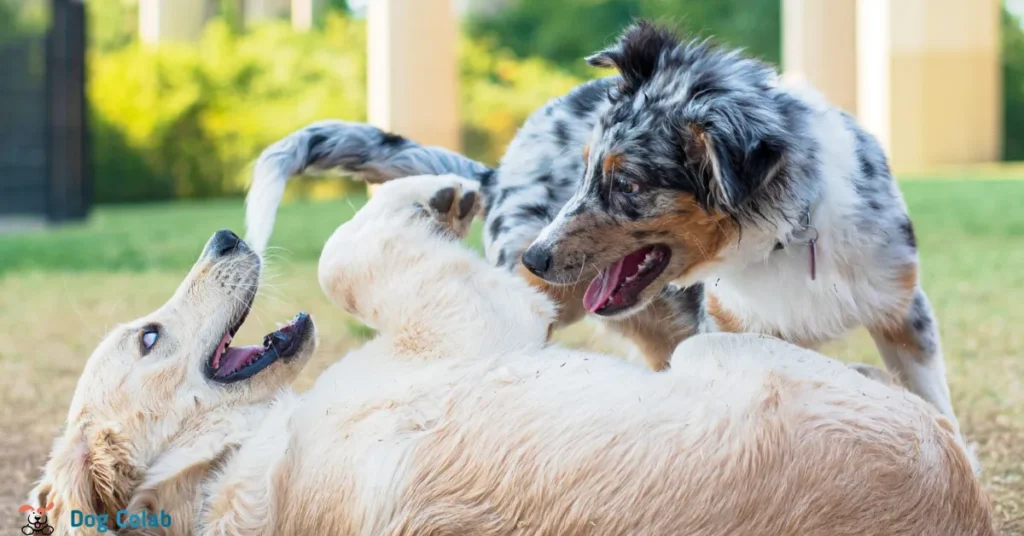
- Consult a Professional Trainer: If your dog is showing aggressive behavior towards other dogs, it’s essential to seek guidance from a professional dog trainer or animal behaviorist. They can observe the behavior firsthand and provide personalized advice and training techniques.
- Socialization: Ensure your dog is well-socialized from a young age. Gradually introduce them to other dogs in controlled environments. Proper socialization can help reduce fear and aggression toward other dogs.
- Observe Body Language: Learn to read your dog’s body language. Recognize signs of stress, anxiety, or aggression, such as raised hackles, stiff body, growling, or baring teeth. Understanding your dog’s emotions will help you intervene before aggressive behaviors escalate.
- Positive Reinforcement Training: Reward good behavior by using positive reinforcement techniques. When your dog interacts calmly and politely with other dogs, praise and reward them with treats or affection.
- Interrupt and Redirect: If your dog starts biting or displaying aggressive behavior towards another dog, calmly interrupt the behavior with a distraction (e.g., a loud noise) and redirect their attention to a positive activity or command. This is an effective way how to get dog to stop biting other dogs legs.
- Teach Proper Play: Monitor your dog’s playtime with other dogs. If their play becomes too rough or aggressive, intervene and encourage more gentle play. Overexcitement can sometimes lead to biting behavior.
- Controlled Encounters: Until your dog’s behavior improves, consider keeping them on a leash or in a fenced area during encounters with other dogs. This allows you to maintain control and prevent potential conflicts.
- Avoid Punishment: Avoid punishing your dog for aggressive behavior, as it can increase fear and aggression. Instead, focus on positive reinforcement and redirection.
- Medical Check-up: If your dog’s behavior changes suddenly, it’s a good idea to have them examined by a veterinarian because pain or discomfort could be causing the aggressive behavior.
You might also want to know more about:– Dog bites when excited.
My Dog Bit Another Dog: How To Treat
If a dog has bitten another dog’s legs, it’s essential to take immediate action to ensure the injured dog’s safety and prevent any further harm. Here are the symptoms and steps to take for treating the injured dog.
Symptoms of a Dog Bite Injury In Another Dog’s Legs
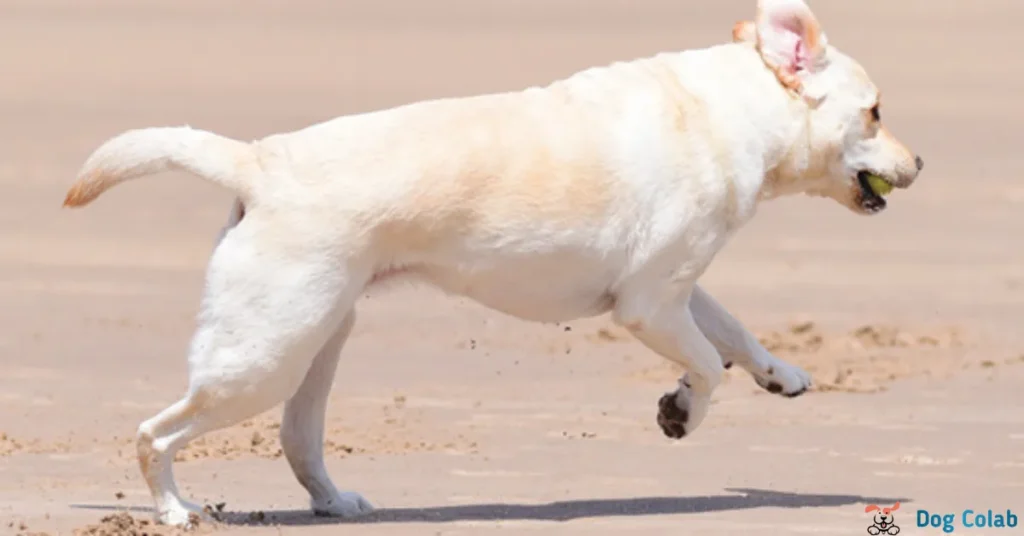
- Visible Wounds: Look for puncture wounds, lacerations, or torn skin in the affected dog’s legs.
- Swelling and Inflammation: The bitten area may become swollen and red due to the injury.
- Limping or Difficulty Walking: The injured dog may have trouble putting weight on the bitten leg.
- Bleeding: Depending on the severity of the bite, there may be bleeding from the wound.
- Pain and Discomfort: The injured dog may display signs of pain, including vocalizations or flinching when the affected leg is touched.
Treatment
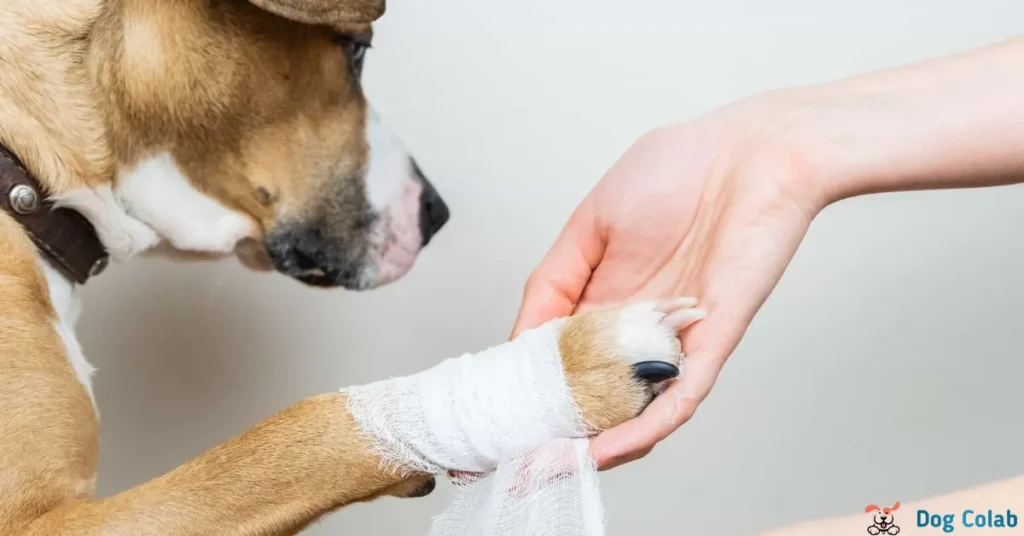
- Separate the Dogs: First and foremost, separate the two dogs to prevent any further attacks. Safety should be the priority for both dogs and humans involved.
- Assess the Injuries: Check the injured dog for any visible wounds or signs of distress. Be cautious as the dog may be in pain and could potentially bite out of fear or pain.
- Muzzle the Injured Dog (if necessary): If the injured dog is in pain and could potentially bite during treatment, it’s safer to use a muzzle. However, do not use a muzzle if the dog is having difficulty breathing or is vomiting.
- Control Bleeding: If there are any open wounds with bleeding, try to control them by applying gentle pressure with a clean cloth or bandage. Elevate the injured leg if possible to reduce blood flow.
- Clean the Wounds: If there are visible wounds, gently clean them with mild soap and water or a pet-safe antiseptic solution. The risk of infection is reduced as a result.
- Seek Veterinary Attention: Regardless of the severity of the injuries, it’s crucial to take the injured dog to a veterinarian as soon as possible. They can properly assess the wounds, provide pain relief, administer necessary vaccinations (to prevent infection), and determine if any further treatment or stitches are required.
- Rest and Restrict Activity: Keep the injured dog as calm and still as possible to minimize further trauma and facilitate the healing process.
- Administer Prescribed Medications: Follow the veterinarian’s instructions and administer any prescribed medications as directed.
- Monitor the Dog’s Progress: Keep a close eye on the dog’s recovery and follow any additional instructions provided by the veterinarian. If there are any signs of infection or worsening of the condition, contact the vet immediately.
- Prevent Future Incidents: If the dogs involved have a history of aggression towards each other, it’s essential to take steps to prevent future incidents. Consult with a professional dog trainer or behaviorist to address any behavioral issues.
Remember that any time a dog bite occurs, it’s crucial to prioritize the safety and well-being of both dogs and seek professional veterinary assistance. Prompt and appropriate treatment can significantly improve the injured dog’s chances of a full recovery.
Conclusion “How To Stop Dog From Biting Other Dogs Legs”
Ensuring a safe and enjoyable playtime for dogs is essential for responsible dog owners. While biting during play is natural, it is crucial to be vigilant and intervene if necessary to prevent accidents and conflicts.
By understanding the potential dangers and taking appropriate precautions, we can create a harmonious and stress-free environment for our pets.
Keeping a close eye on their interactions and stepping in when needed allows dogs to play freely without compromising their well-being. Responsible supervision fosters a healthy and happy playtime for our furry companions.
NOTE:- You can find more information by clicking this link.
FAQs
1. How do I train my dog not to bite other dogs?
To train your dog not to bite other dogs, focus on socialization, introducing them to various environments and experiences. Avoid engaging in aggressive play, offer chew toys, and consult with a trainer if needed. Practice avoidance and work on addressing your dog’s triggers responsibly.
2. Should you punish your dog for biting another dog?
No, you should not punish your dog for biting another dog. Punishment can worsen the situation by hindering communication between the dogs, leading to more aggression. Instead, focus on positive training methods and proper socialization to prevent such incidents.
3. What is the command for no bite?
The command for “no bite” during play is to firmly say “NO BITE” followed by “drop it,” “down,” and “stay.” Use the leash to enforce these commands. Once they are in a down/stay, stand on the leash and ignore them for 30-45 seconds. Then, calmly say “ok take” to resume play.
